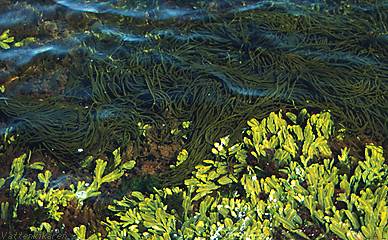 |
 |
 |

Not even where beaches are relatively protected are perennial algae found in shallow water in the Baltic. Here, the belts of fine threaded algae change during the seasons. The perennial bladder wrack in the Baltic is found first at a depth of about 1/2 m and deeper. Here, the deeper algal vegetation does not have the same variety as on the Swedish west coast. Below the alga zone in the Baltic, blue mussels almost totally dominate.
| Cliffs and rocks are fantastic! | ||||
| Zoning and flecked occurrence | ||||||
| Animals that are attached | ||||||
| Modular construction | ||||||
| Variation and change | ||||||
| Variations in water level | ||||||
| Wave exposure | ||||||
| Both cliffs and rocks | ||||||
| Freshwater and saltwater | ||||||
| Geography, climate and history | ||||||
| Organisms life cycles | ||||||
| Organisms effect on each other | ||||||
| Energy and the flow of material | ||||||